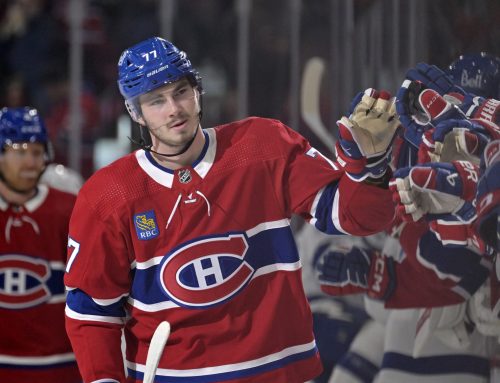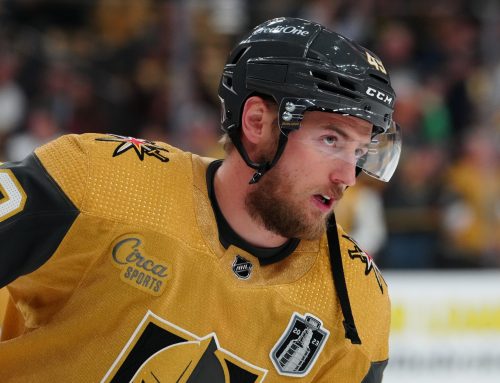Frozen Tools Forensics: Shooting percentages and expected scoring rates
Chris Kane
2021-04-09
This week we are going to take a bit of a long and meandering trip. I write this intro after I went down this rabbit hole, and it all starts with the tools available on Frozen Tools. I added some links along the way so that folks can follow along and find the various reports/charts and see at least one use for them as described here.
So let's begin.
To start I want to take a look back at the Frozen Tools Homepage. You may notice a little bar at the top highlighting a 'Build Your Own Chart.' Well, I did and I wanted to. For those unfamiliar with the page, it essentially lets you make a chart out of a number of different team-level data sets. You can set the X and Y axis with different variables and then change the size of each icon with a third set. You can also do some additional sorting and filtering by division, team etc.
In playing around with the options I stumbled upon a chart comparing team's expected goal numbers to their actual goal output. For the most part, the teams fell upon a pretty tight path where the two (goals and expected goals) were pretty well aligned. That grouping establishes a solid baseline. With that baseline, we can see that any team above that line is getting more goals than expected and a team below that line is getting fewer than expected. And wouldn't you know it there were two teams that dramatically stuck out? Washinton, and Buffalo. Now you may have realized I haven't mentioned the third variable yet, and well at this point I decided to add PDO to the mix. PDO is a combination of a team's shooting a save percentage and is a useful measure to get an idea of how 'hot' or lucky a team is getting.
In this case, when we add the PDO measure as the size of the icon we learn some interesting things.
Buffalo is ranked well below the trend line created by all of the other teams. This means they are getting fewer goals than they have been expected to score. When we add their PDO their icon shrinks massively and potentially unsurprisingly given how few goals they are scoring. The piece it adds to this picture is that either their team save percentage or their shooting percentage (or both) are pretty low and might rebound a bit.
On the flip side, Washington is dramatically above the line created by the rest of the league, meaning they are scoring well above their expected rate, and when you add PDO to the mix their icon grows, becoming one of the largest in the league.
So we have two really questionable stats here for Washington. Both of these make it look like the team is getting too many goals for how they are playing. That begs two questions – which players are most directly contributing to this team-level data, and who might be most in line for a fall if things start to swing the other way.
To answer these questions we turn to another tool feature: Compare Players. It allows us to type in and select the Washington players and view them as a group. I used the top nine on offense (sorry Nic Dowd) and top-4 D. It gives us basic and extended stat comparisons for this season and a three-season average. It is essentially a player profile laid out linearly in three tables.
But what are we looking for? In this data set, there are two immediate things I want to see. Given we see high PDO and a high goals-to-expected goals ratio I am looking for percentages that would tell me if players are doing too much with the opportunities they are currently getting. So I am looking for players' individual shooting percentages, and team five-on-five shooting percentages. In this case these data would tell me if they are scoring a bit more frequently than expected (personal shooting percentage) and if their teammates are scoring more than we would expect when they are on the ice (team five-on-five shooting percentage).
First up individual shooting percentage.
| 21' Sh% | 3 Yr Sh% | Change | |
| NICKLAS BACKSTROM | 20.6 | 12.9 | 7.7 |
| JOHN CARLSON | 10.4 | 8.1 | 2.3 |
| ZDENO CHARA | 4.1 | 5.1 | -1 |
| LARS ELLER | 13.2 | 9.7 | 3.5 |
| CARL HAGELIN | 7.1 | 6.5 | 0.6 |
| EVGENY KUZNETSOV | 12.3 | 12.4 | -0.1 |
| DMITRY ORLOV | 10.2 | 4.7 | 5.5 |
| T.J. OSHIE | 15.1 | 17.8 | -2.7 |
| ALEX OVECHKIN | 14 | 15 | -1 |
| JUSTIN SCHULTZ | 3.8 | 3.8 | 0 |
| CONOR SHEARY | 17.4 | 10.8 | 6.6 |
| DANIEL SPRONG | 18.9 | 12.3 | 6.6 |
| JAKUB VRANA | 15.2 | 14.3 | 0.9 |
| TOM WILSON | 18.4 | 15.6 | 2.8 |
Seven players of this 14-player sample are shooting better than average with six shooting about average. T.J. Oshie is the only player on this list who is actually shooting a little bit worse than we would expect him to be. Conor Sheary and Daniel Sprong are kind of outliers here in that they have been bounced around the lineup and could be expected to fluctuate a bit more, but Nicklas Backstrom's 20.6 percent number is pretty huge for him.
For team five-on-five shooting percentage, the numbers are all very high.
| Player | 5on5 Sh% |
| NICKLAS BACKSTROM | 13.3 |
| JOHN CARLSON | 11.1 |
| ZDENO CHARA | 11.9 |
| LARS ELLER | 8.1 |
| CARL HAGELIN | 8.6 |
| EVGENY KUZNETSOV | 13.5 |
| DMITRY ORLOV | 10.2 |
| T.J. OSHIE | 11.3 |
| ALEX OVECHKIN | 13.1 |
| JUSTIN SCHULTZ | 11.7 |
| CONOR SHEARY | 9.9 |
| DANIEL SPRONG | 15.7 |
| JAKUB VRANA | 12.5 |
| TOM WILSON | 13.6 |
In a regular world, we expect most players to be between eight and maybe ten percent. Some players, like Evgeny Kuznetsov here have a history of performing above average. He is consistently above ten percent for his career. But note here that eleven of these 14 players are above ten percent and that is definitely not normal for all of them. T.J Oshie is the only other one whose 2021 number is really all that close to his career average. Most of the rest are several percentage points too high. The biggest offenders are Tom Wilson, and again Nicklas Backstrom.
So let's take a minute a look at Backstrom. At 33 he is putting up his highest point pace since 2016-17. He is doing it with the second-lowest total ice time of his career and the lowest average power-play time of his career. It is in fact the first time in his career he is down below three minutes a night on the man advantage. He is also pacing for his lowest shots rate of his career, just slightly edging out his 2012-13 and his 2016-27 seasons.
By this point, I hope it is clear that the reason for his success thus far is not because his deployment is better, not an increase in shot count, but because he is seeing a massive increase in his personal and his team five-on-five shooting percentage. If he was shooting at his three-year average he would have eight instead of 13 goals. That would drop him down to a 71-point pace, the second-worst of his career.
Slight sidebar, can we marvel for a moment at the fact that over the course of 14 seasons only one season has been outside of the 70- to 90-point range (and that was his 101-point season). Talk about consistency.
The takeaway? Washington as a whole is scoring too many goals, and Backstrom (and Wilson) is a big part of that. You aren't dropping these players going into your fantasy playoffs, but if you are counting on their scoring I would suggest shoring it up if at all possible.
That is all for this week. Thanks for reading.
Stay safe out there.
Help make hockey accessible for everyone. Start by supporting:





 T.B
T.B FLA
FLA NYI
NYI CAR
CAR TOR
TOR VGK
VGK VAN
VAN EDM
EDM MIN
MIN STL
STL S.J
S.J
